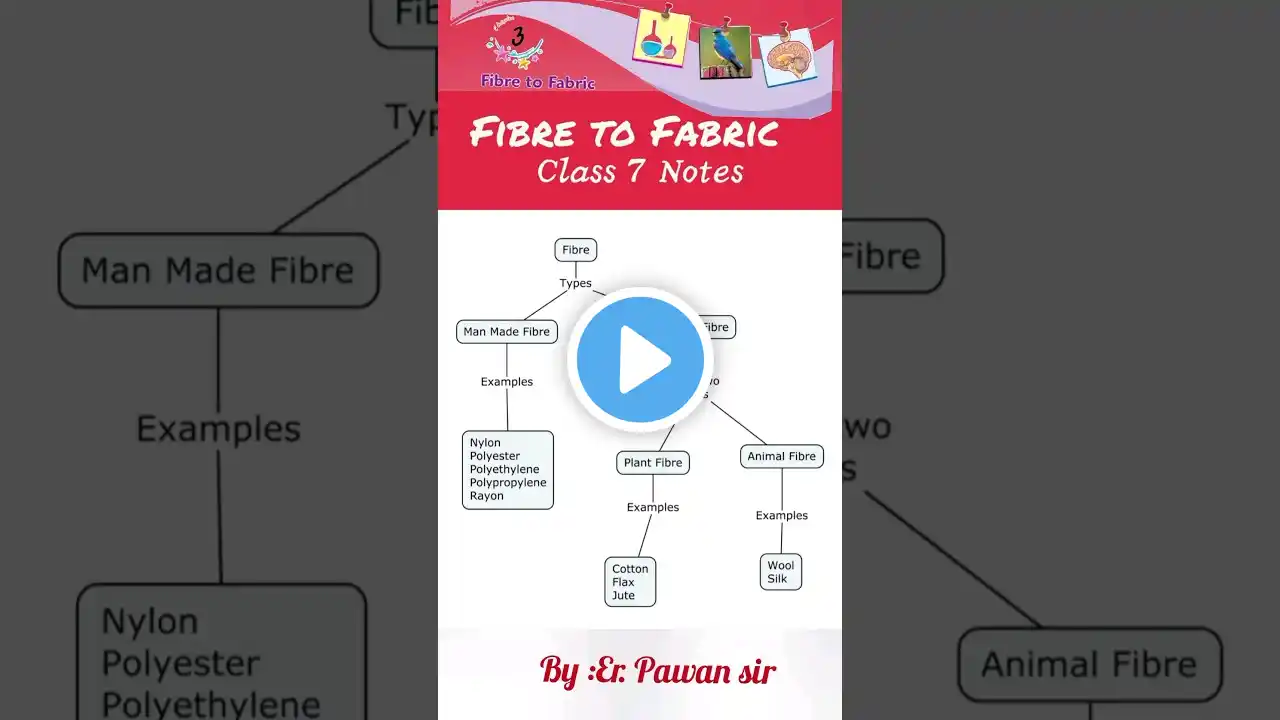
class 7 science chapter -3, fibre to fabric #er.pawansir Wool • Obtaining Wool from Sheep• Silk
Wool • Steps for Obtaining Wool from Sheep • Silk • Life Cycle of a Silkmoth • Sericulture • Types of Silk • Health Hazards to the Workers of Wool and Silk Industries The is the basic unit of fabric and the type of fibre decides the type of fabric. Basically, fibres may be divided into two broad categories namely and . are obtained from natural sources like plants and animals, and thus are again of two types– and . like nylon, rayon, polyester, etc. are manufactured artificially. Plant fibres like cotton and jute have in them. While the base of animals fibres is a tough protein material called . Some examples of animal fibres are wool and silk. We all are familiar with wool. We wear clothes made up of wool in winters. Wool keeps us warm. Wool is an animal fibre that is obtained from sheep, yaks, alpacas, goats, vicunas, etc. The angora goat gives mohair wool and the Angora rabbit provides us angora wool. They are considered to be very fine varieties of wool. is also one of the finest wool. This is obtained from the Cashmere goat which is very rarely found in China and Tibet. This is very soft wool and can be easily dyed in beautiful colours. This wool is called the ‘ '. the wool-giving animals are found in cold, hilly areas and their body covering or fleece has the capacity of keeping them warm in a very cold climate. Wool fibre is usually white, black or brown in colour. It is different from hair or fur as it has tight curls called and is elastic and grows in bunches. The wool we use, reaches us after passing through many processes. These are as follows : First of all, the sheep with good quality of fleece are selected. Sheep has two types of fibres on their skin : (i) Thick and coarse bearded hair. (ii) Soft and fine under hair that are present close to skin. The soft under-skin fibre is used to make wool. So, those sheep are selected for rearing that have thick coat of fine hair. These sheep are bred with other sheep to reproduce offsprings having a coat of hair that is good both in quality and quantity. This is called . Once the fine quality sheep are selected they are reared in a safe and comfortable environment. In India, the main places where sheep are reared are hilly areas of Jammu and Kashmir, Himachal Pradesh, Arunachal Pradesh, Sikkim as well as the plains of Rajasthan, Gujarat, Punjab and Haryana. Sheep are mainly fed on grass and leaves. In spite of it, the mixture of bushes, corn, millet, minerals and oil cakes are also provided to them. Shepherds take them to graze in the fields. In winters, they are kept indoors and fed on dry fodder, grains and leaves. During rearing, sheep develop a thick coat of fine hair on them. To obtain the wool, we need to remove the coat of hair from them. This is done by shearing. For this purpose, a device like shaving razor is used. Shearing may be done manually or by machines. The upper thick fleece is shaved off along with the thin, uppermost layer of the skin. But it does not harm the sheep, just like we don't get hurt while cutting off our hair. The sheared coat of hair has with it many other undesirable things crimps selective breeding Steps for Obtaining Wool from Sheep 1. Selective Breeding 2. Rearing 3. Shearing 4. Scouring • • Bedouins use wool to keep the heat out and protect their body. Wool can absorb water up to 1/3 of its weight. More to Know! More to Know! More to Know! If a sheep is stressed while growing its fleece, there may be damage and breaks in the wool. More to Know! More to Know! More to Know! Shearing 24 Science-7 fi